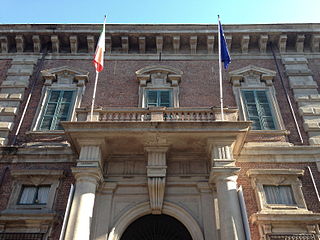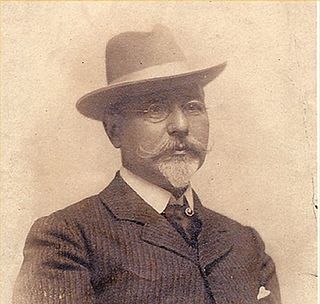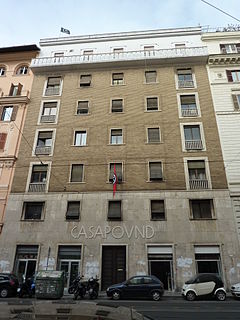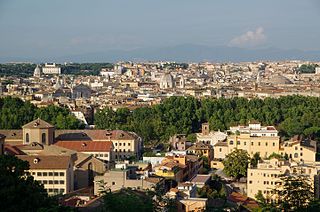History
The fort, which covers an area of 2.5 ha (6.2 acres), was built starting from 1882 and finished in 1891 on Monte Antenne, from which it takes its name, near the confluence of the river Aniene with the Tiber.
Until the 1940s it was used as a depot of the Signal Corps and then decommissioned. A part of the fort was taken over by the Municipality of Rome, which only partially used it; the remainder was occupied by military units.
In 1958, on the occasion of the upcoming 1960 Rome Olympics, the public ownership sold it to the Municipality of Rome in order to use it as a camping site, which however was built only in the surrounding park, since some private residences had already been built within the fort.
According to the most recent news, the fort and its complex should be part of a recovery plan, aimed at transforming it in a hotel or in a branch office of the nearby LUISS University.
In accordance with the Code for Cultural and Landscape Heritage, the fort is a protected area under Ministerial Decree August 6, 2008.

Cesare Merzagora was an Italian politician from Milan.
Enrico Stefani was an Italian architect and archaeologist working in Greece, Crete and Italy during the early twentieth century.

Palazzo Brera or Palazzo di Brera is a monumental palace in Milan, in Lombardy in northern Italy. It was a Jesuit college for two hundred years. It now houses several cultural institutions including the Accademia di Brera, the art academy of the city, and its gallery, the Pinacoteca di Brera; the Orto Botanico di Brera, a botanical garden; an observatory, the Osservatorio Astronomico di Brera; the Istituto Lombardo Accademia di Scienze e Lettere, a learned society; and an important library, the Biblioteca di Brera.

Ettore Roesler Franz was an Italian painter and photographer. He was among the most prolific Italian watercolorists and vedutisti of the late nineteenth century.

The Palazzo della Farnesina is an Italian government building located between Monte Mario and the Tiber River in the Foro Italico area in Rome, Italy. Designed in 1935, it has housed the Italian Ministry of Foreign Affairs since its completion in 1959. A reference to "La Farnesina" is often to be intended as a metonymy for the hosted institution, namely the Ministry itself.

The Museum of Contemporary Art of Rome, Italian: Museo d'Arte Contemporanea di Roma, usually known as MACRO, is a municipal contemporary art museum in Rome, Italy. The museum is housed in two separate places: a former brewery in Via Nizza, in the Salario quartiere of the city; and a former slaughterhouse in Piazza Orazio Giustiniani, in the quartiere of Testaccio.

The Palace of Justice, Rome, the seat of the Supreme Court of Cassation and the Judicial Public Library, is located in the Prati district of Rome. It fronts onto the Piazza dei Tribunali, the Via Triboniano, the Piazza Cavour, and the Via Ulpiano. The huge building is popularly called in Italian the Palazzaccio .
The Pesenti or Sabbioneta family of artists was active in Cremona from the 15th to the 17th centuries. The founder of the dynasty of artists was Galeazzo Pesenti Seniore, also called Il Sabbioneta, active in the 15th century in Cremona. Sabbioneta refers to a parish in Cremona.

The Castle of Stilo or Norman Castle is a castle of the Norman period built at Stilo, Calabria in southern Italy by Roger I of Sicily upon Monte Consolino in the 11th century.

Ruggero Lenci is an Italian architect and Professor of Architectural Design at the Faculty of Civil and Industrial Engineering of the Sapienza University of Rome.

A far-right social centre is a space inspired by neo-fascist and Third Position ideas, typically in the 21st century.

Onorato Carlandi was an Italian painter, mainly of watercolors of Rome, the surrounding countryside and of Great Britain. He was married to the painter, Lina Haverty (?-1950), daughter of the Irish historian and journalist, Martin Haverty.

The historic district of Rome was declared World Heritage Site by the United Nations Educational, Scientific and Cultural Organization in 1980. It covers 19,91 km² and is included in 22 rioni with 186.802 inhabitants. There are 25.000 importants archaeological sites and locations.
The Forts of Rome are the complex of fixed works of military defense constituting the entrenched field of the city, consisting of fifteen "Prussian"-type forts and four hexagonal batteries. They were erected between 1877 and 1891 in defense of the strip of territory immediately surrounding the city of Rome (Italy), then in the countryside, at a distance of about 4–5 km from the Aurelian walls and about 2–3 km from each other, for an overall development of about 40 km (25 mi).
Forte Monte Mario is one of the 15 forts of Rome, built between the years 1877 and 1891.
It is located in Rome (Italy), in the Quarter Q. XV Della Vittoria, within the Municipio I.
Forte Braschi is one of the 15 forts of Rome, built in the period between 1877 and 1891 to constitute the "entrenched field of Rome".
It is located in the Quarter Q. XIV Trionfale, within the Municipio XIV.
Forte Boccea is one of the 15 forts of Rome, built in the period between 1877 and 1891 as a part of the "entrenched field of Rome".
It is located in Rome (Italy), in the Suburb S. IX Aurelio, within the Municipio XIII.

The Suburbi di Roma are the third level of toponomastic subdivision of the Municipality of Rome (Italy).

Between the 1860s and the First World War the Kingdom of Italy built a number of fortifications along its border with Austria-Hungary. From 1859 the fortified border ran south from Switzerland to Lake Garda, between Italian Lombardy and Austrian South Tyrol. After 1866 it extended to include the border between South Tyrol and Veneto, from Lake Garda to the Carnic Alps. This frontier was difficult to defend, since Austria-Hungary held the higher ground, and an invasion would immediately threaten the industrial and agricultural heartlands of the Po valley. Between 1900 and 1910, Italy also built a series of fortifications along the defensive line of the Tagliamento to protect against an invasion from the northeast. The border with Switzerland was also fortified in what is known as the Cadorna Line.

Borgo Santo Spirito is a street in Rome, Italy, important for historical and artistic reasons. From a historical point of view, it is considered the most interesting street in the Borgo district. Of medieval origin, it is linked to the foundation of the ancient fortified hospice for pilgrims from England, the Burgus Saxonum. The street houses the oldest Roman hospital, the Arcispedale di Santo Spirito in Saxia, which gave it its name. Heavily altered during the works for the opening of Via della Conciliazione, it nevertheless avoided the fate of the two parallel streets of Borgo Nuovo and Borgo Vecchio, both destroyed.














